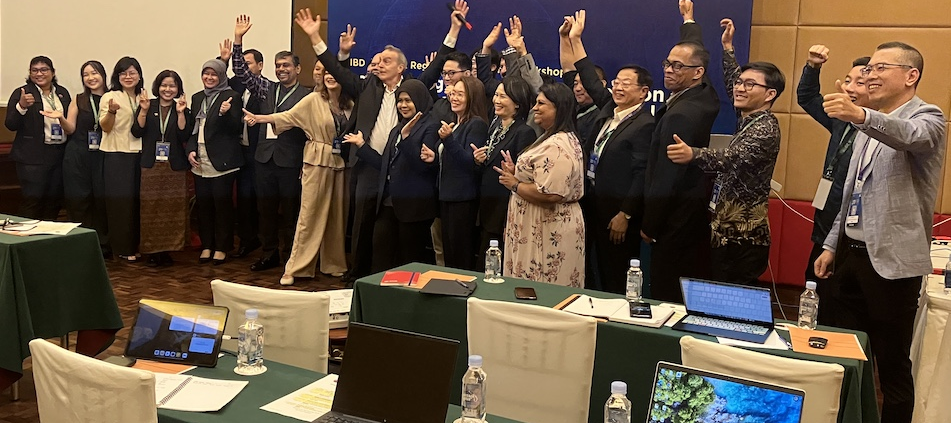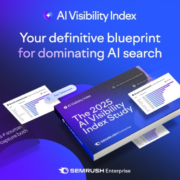Ai tools for media content creation: Asia Media Summit 2025 – RadioInfo Asia
25 July 2025 · Conference · News · Training
The first day of this year’s Asia Media Summit offered a range of workshops for broadcasters across the Asian region.
Workshop topics included Ai, Digital Newsrooms, Transmission, Sustainability, Disinformation and Youth.
In one of the full day workshops, developed by Steve Ahern for AIBD and IPPTAR, about 30 broadcasters learnt how to apply the latest Ai tools to their work in radio, television, podcasting and drama production.
Demonstrating the power of Ai to animate still pictures if you construct the right prompt instructions, Ahern took a group shot and transformed it into realistic video footage using Ai. The original, real, group photo is above. The video below is not real, it was generated from a prompt that said: “Start with this still photo of a group of people and turn it into a 10 second video where the people are cheering and clapping, with sunbeams and sparks coming out of their hands when they clap.”
The pros and cons of using Ai were discussed, including a warning that Ai tasks use more energy than normal searches and are not necessarily environmentally friendly.
As responsible usage of Ai develops, professional media outlets that plan to use it will need to hold suppliers accountable for their energy usage and will also need to use it efficiently so as not waste resources or staff time. Training is needed to guide staff in the responsible use of Ai.
“It’s an exciting new tool, but we have to be aware that every Ai request is very power hungry…
“There are other things to watch out for too. Putting too much information into the open via Ai may not be a good idea for security and competitive-advantage reasons… and don’t forget, whatever you can make, someone else who is peddling disinformation can make too and use it to create fakes.”
Low cost openly accessible tools demonstrated in the training session included:
A range of higher level, more expensive professional tools were also demonstrated, including:
Ahern said one of the trends now for the more cost efficient tools is a ‘pay as you go’ payment model based on minutes used, rather than a high monthly or annual subscription.
Translation is now also an important Ai use case, but its success depends on the amount of linguistic data used to train the Ai models. For minority languages, such as Khmer, the language spoken in Cambodia and nearby countries, there is not enough training data to deliver fast accurate translation. Broadcasters are likely to be the source of language training as Ai models expand to other languages, so perhaps it would be in the interests of broadcasters to develop their own in-house Ai translation tools and sell the results, rather than letting the public Ai bots take that coverage and use it without the ability for broadcasters to generate income from their copyrighted content, suggested Ahern.
Two KBS Korea specialists in Ai audio and video, Han Ju-yeol and Yim Young-jae, discussed their findings when using Ai for their productions. Learnings included:
Violent or horrific things are difficult to make with AI, due to the intentional limitations of the technology that will not create graphic death or horror scenes.
When making a historical documentary about battles in the middle ages, Han found that the Generative Ai video tools could not create authentic looking Korean armour because it was mostly trained on the look of armour worn by Western knights. The Chinese Ai tool Kling was the most successful at creating Asian style armour.
Intentional limitations on copying real artworks or designs are imposed on most Ai generators, so as not to breach copyright. This resulted in the inability to create a realistic drama scene where a Korean flag was shown on a flagpole.
The pair made the point that many broadcasters and content creators are using the tools, but without establishing professional workflows to ensure that teams work consistently and most efficiently.
They also advised that detailed prompts are needed to create the best results. For example, don’t just ask ‘create a scene of two men fighting.’ Instead, give more detail such as: ‘Create a fight scene that is 15 seconds long where two men are fighting. One man is dressed in a dark hoodie and track pants while the other is dressed in a blue TShirt and jeans. One has long hair, the other has short hair and tattoos. One man is carrying a knife and the other man is holding a chain.’
ChatGPT is not at the professional level yet, according to the Korean experts, but they found that it is good at creating prompts to use in other professional tools such as OpenArt and Photoshop.
Some tools are more accurate at responding to prompts than others. Han has found that Google’s Veo 3 is “one of the most advanced Ai models for prompt responsiveness.”
For audio, one of the most significant Ai uses is for vocal and audio separation in music, as used by Paul McCartnery in the Beatles’ track ‘Then and Now.’ “It can be used for remastering of legacy audio,” said Yim. “There is no longer a need for multitrack originals, you can remix from a finished song and separate the elements,” he said.
Also in the workshop, two Malaysia based lawyers, Teeruvarasu K Muthusamy and Vimal Sathiaseelan explained the legal implications of using Ai to generate professional content. Key points included:
Can broadcasting organisations claim copyright over works they generate using AI? Based on the legal definition of Artificial Intelligence, the test relates to how ‘original’ is the work and who is the eligible copyright owner.
A core principle in determining whether ownership can be claimed for a work that uses Ai is whether there was ‘sufficient effort’ put in by humans to make the work unique.
These two points are important for media companies to consider because if they sack most of their human staff and create most of their content with Ai, they will no longer be able to claim any ownership of their content creation because they have not put ‘sufficient human effort’ into the creative process.
World laws are still developing in relation to Ai copyright. According to the lawyers, in US law, anything made by AI “immediately goes to the public domain and cannot be copyrighted.” But China is moving in a different way, “it is viewing Ai as a tool, owned and used by the people involved, so that the copyright can be held by the people or company involved.”
The first comprehensive legal framework around Ai is the European Union’s AI Act of 2024. Other jurisdictions have regulations, but no legislation yet. “The EU has acted early to establish principles and a framework. Its aim is to provide a high level of legal protection for content creators and other stakeholders,” said the lawyers.
They suggested that media organisations should develop and publish documented policies and procedures to say how AI is being used, and they should make sure there is human oversight, so that you can claim ‘sufficient effort’ as a basis for their copyright.
Speaking in the workshop, Cambodia’s Under Secretary of State at the Ministry of Information, Ouk Kimseng, a former journalist, radio presenter and tv news reporter, emphasised the difference between how content creators approach Ai. There are those who work for professional media companies who take their legal and ethical obligations seriously, contrasted with the unregulated amateur content creators who either don’t know about professional obligations, or don’t care about them because their aim may be to create disinformation.
Participants evaluated the workshop as a success and left with new tools to use and a plan to take back to their organisations on how they can responsibly introduce Ai to their media businesses.
Related report: Accurate and timely information access is one of the foundations of a democratic society: Asia Media Summit 2025
Tags: AIBD | artificial intelligence | Conference | IPPTAR | KBS | training
23 July 2025 A local radio broadcaster was gunned down in the southern Philippines on Monday, according to a presidential task force. Erwin Labitad Segovia, 63, a Radio WOW…
7 October 2015 “Technology is now in your pocket,” said Din Hamid of RTM Malaysia, one of the participants in this week’s workshop on shooting video with smartphones….
5 November 2024 At a one day workshop in Tunisia this week, the Arab States Broadcasting Union explored the latest trends in digital archiving for radio and television…
22 July 2025 The 2025 Asia Media Summit (AMS) is being held in Cambodia this week. The annual international media conference is the AIBD’s flagship event, with workshops…
Have something to share? Send us your media releases
"*" indicates required fields
radioinfo ABN: 87 004 005 109 | PO Box 6430 North Ryde NSW 2113 Australia. | All content © 1996-2025. All Rights Reserved.










